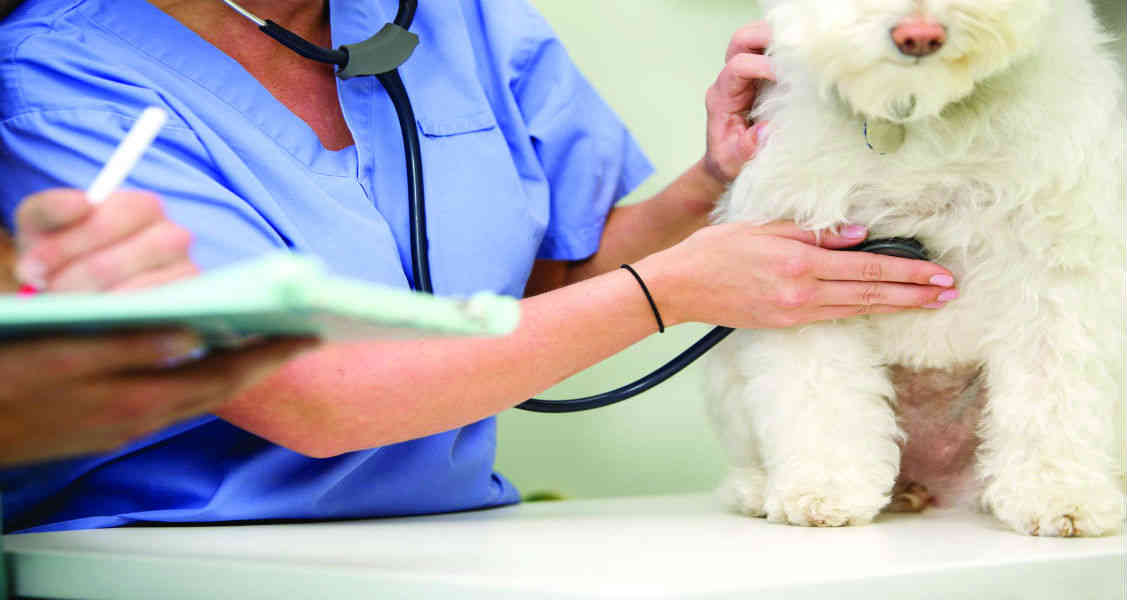Tips for Making Trips to the Vet Less Scary
By: Abby Marshall | Reviewed by Dr. Clayton Greenway, B.Sc., DVM | Jan 3, 2017

No one likes going to the doctor, and that includes your pet. After all, most vet visits include thermometers placed in uncomfortable places, needles, and poking and prodding. Although your dog or cat may never truly enjoy a trip to the vet, there are ways to help ease his or her anxiety during a visit.
Practice, Practice, Practice
Although many owners take their dogs with them when running errands or on other excursions, cats are generally put into the car for only one reason – a trip to the vet. Therefore, the second the carrier comes out, many cats will run and hide. Give Fluffy a reason to associate the carrier with other things. Leave the carrier out, put treats into it, and play games near it. Put kitty in the carrier and take short rides in the car. Make sure to reward any trip with tasty treats. Do this often so that your cat learns the carrier (and the car) are not so scary.
The same deconditioning should be used with a dog. If you don’t regularly take Fido for rides in the car except to go to the vet, start doing so. It can also help to take your pup to her doctor’s office just to say hello to the staff. Ask the receptionist to give your pup a treat each time you bring her in, and allow staff members to greet (and possibly pet and handle) her. This is one of the ways of how to get your dog not to hate the vet.
Stay Calm
Our pets pick up on our emotions more than we think, and if you show anxiety or fear at the veterinarian’s office, your pet will think there is a reason to be upset. Although it can be difficult not to show unpleasant emotions, especially if you are worried about your pet’s health, do your best to present a calm and soothing attitude while seeing your pet’s medical health professional.
Be Prepared
While at the vet’s office, most cats are less anxious in a carrier than they are simply being held (a carrier is also a much safer option for kitty). Purchase a carrier that is large enough for your cat to move around in comfortably and that offers easy access should your feline choose not to leave the carrier voluntarily for her examination. A towel placed over the carrier can also help to calm Fluffy, and a piece of your clothing or a blanket that smells like home placed inside can ease some stress.
Dogs should be on a sturdy leash/collar/harness combination, and it can help to ease Fido’s anxiety about the vet by exercising him prior to the visit, assuming he is well enough for this. If you have an especially anxious pet, talk to your vet about making an appointment during less-busy times, and if you are stuck waiting for a while, take your dog outside for a walk around the office’s grounds.
Vet House Calls
Some pets will never be comfortable going into a vet’s office, and if yours is especially anxious about doing so, you may want to consider at home veterinary care. This is a service being offered more commonly, and depending on where you live, this may be an option that relieves both your animal’s stress as well as your own.
A trip to the doctor can be anxiety-producing for both humans and animals alike. However, with some practice and preparation, such a visit doesn’t have to be as stressful. Teach your pet that car rides and carriers are not all bad, stay calm, and consider a veterinarian home visit. Whether it’s a regular wellness checkup or something more serious, these tips can help make a visit to your pet’s medical health professional less scary.


Disclaimer: healthcareforpets.com and its team of veterinarians and clinicians do not endorse any products, services, or recommended advice. All advice presented by our veterinarians, clinicians, tools, resources, etc is not meant to replace a regular physical exam and consultation with your primary veterinarian or other clinicians. We always encourage you to seek medical advice from your regular veterinarian.

